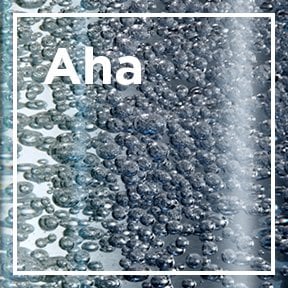
More about AHA Glycolic Acid
There are a few different types of AHAs that you’ve probably heard of (malic and lactic acid are two of the most well-known). They each work in a similar way, which is by dissolving the top layer of skin to reveal new cells underneath, helping to even out the overall tone of skin while imparting a radiant glow. However, there’s one particular AHA that’s most widely talked about, is the most common within the skincare sphere, and that has the most scientific backing: glycolic acid.

Our products containing AHA Glycolic Acid
Our products containing AHA Glycolic Acid

Pure Active AHA+BHA Charcoal Anti-Blemish Serum 30ml
What is glycolic acid?
Loved for its ability to slough away dead skin cells to leave skin looking fresher and brighter, glycolic acid is a known dermatological ingredient. Out of all the different acids, glycolic is the smallest amongst all AHAs, meaning that it’s able to reach the epidermis to dissolve intercellular cohesion, promote desquamation and encourage cell renewal.
What does glycolic acid do for skin?
First and foremost, it’s an extremely effective exfoliator, and by shedding the dead skin cells at stratum corneum level (the skin’s outermost layer) it’s able to improve everything from texture and tone to fine lines and wrinkles.
Which skin types will benefit from glycolic acid?
Glycolic acid can be beneficial for any and all skin types, but it’s particularly effective for those with dull, oily or acne-prone complexions. How regularly you use glycolic acid really depends on the strength of the formula you’re using. Most of our products with glycolic acid are formulated to be used on daily basis for gentle yet effective peeling effect.
When using a product with glycolic acid, it is advised to avoid sun exposure and apply at least SPF30 the morning after use. To prevent irritation, application should be spaced out, and in case of persistent irritation, the use of the product has to be stopped. Depending on the product, it can also be recommended to avoid using it around the eye area.
It’s important to note that, even if you’re seeing instant results, using glycolic acid more regularly than recommended won’t make it work faster – instead it will just cause redness, sensitivity and a higher chance of damaging your skin barrier. If you are prone to sensitivity, or have dry skin, overuse can lead to irritation so always make sure you follow the product instructions on the glycolic acid that you’re using.

















